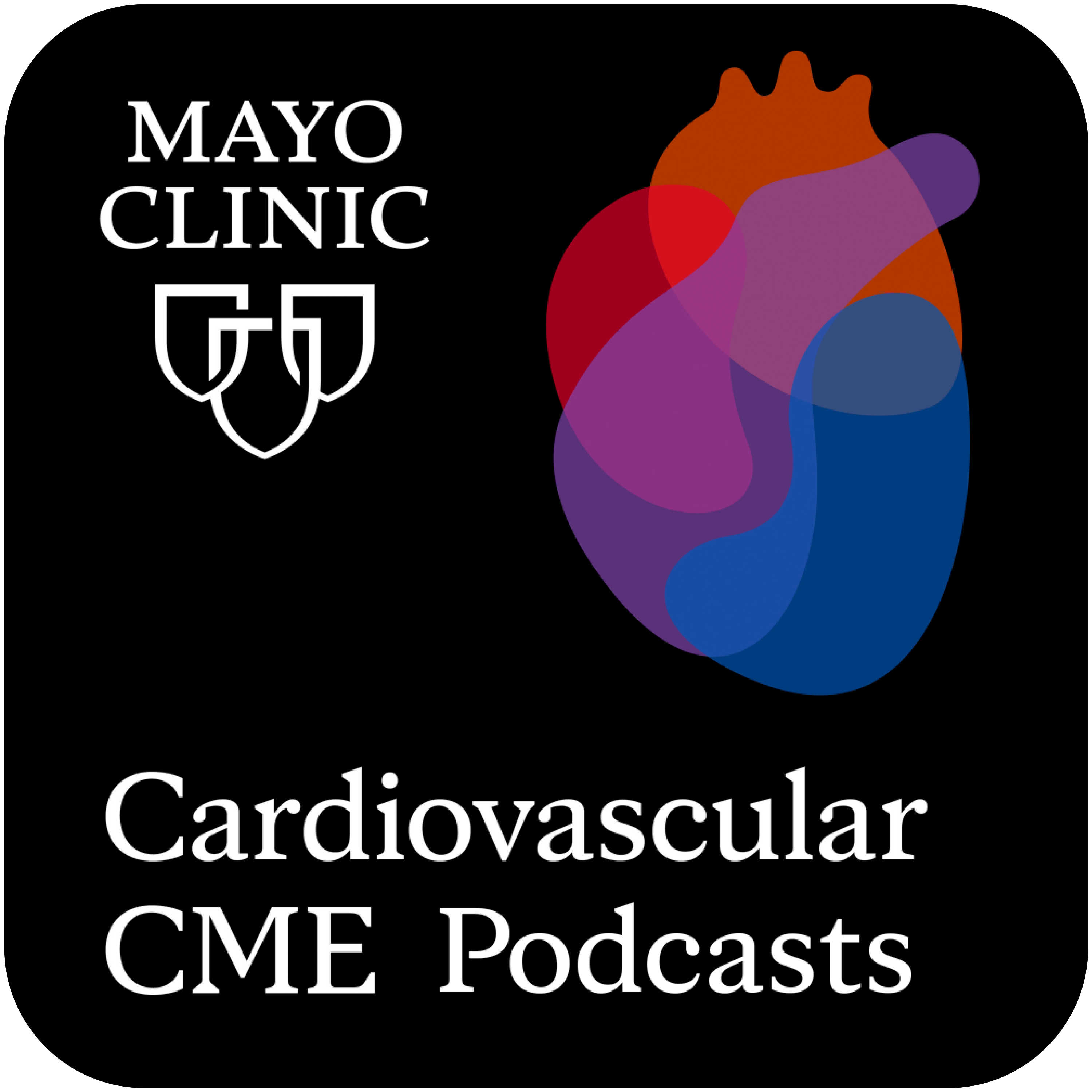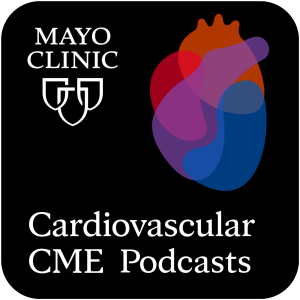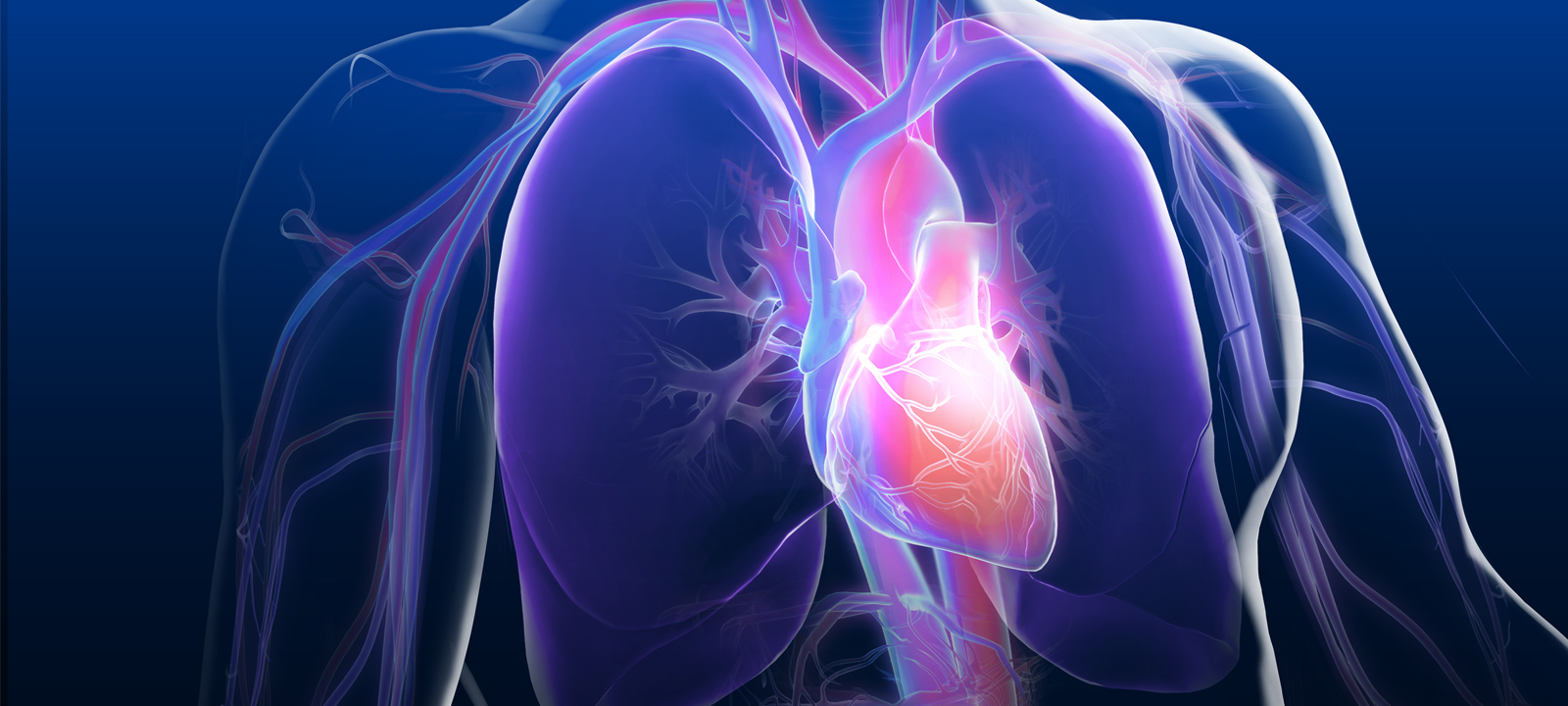
380.3K
Downloads
262
Episodes
The Cardiovascular CME podcast is a free educational offering from Mayo Clinic, featuring content geared towards physicians, physician assistants, and nurse practitioners who are interested in exploring a multitude of cardiology-related topics. Tune in and subscribe to explore today’s most pressing cardiology topics with your colleagues at Mayo Clinic and gain valuable insights that can be directly applied to your practice. No CME credit offered for podcast episodes at this time.
Episodes

Tuesday Aug 02, 2022
Peripheral Artery Disease (PAD) Treatment
Tuesday Aug 02, 2022
Tuesday Aug 02, 2022
Peripheral Artery Disease (PAD) Treatment
Guest: Robert D. McBane, II M.D.
Host: Stephen Kopecky, M.D. (@DrSteveKopecky)
Most patients, who have Peripheral Artery Disease, do not experience the symptoms right away. However, patients affected with PAD will likely experience symptoms such as pain in the legs during walking and loss of hair. PAD limits the blood flow from the vessels to the heart. Without the proper treatment, the effects of PAD can lead to amputation of the foot or legs. Major amputation can potentially lower the life expectancy of patients that are affected with PAD.
Joining us today to discuss Peripheral Artery Disease (PAD) Treatment is Robert D. McBane, II M.D. professor of medicine in the department of cardiovascular medicine at Mayo Clinic in Rochester, Minnesota.
Specific topics discussed:
- How do you define PAD?
- Is invasive or noninvasive imaging diagnosis required? Or can be based on ABI? Or is physical exam adequate with a bruit in the carotids, renals, or femorals?
- In PAD, are risk factors the same as in cardiovascular or cerebrovascular disease?
- Why is having PAD a greater risk factor for cardiovascular morbidity and mortality than coronary artery disease or cerebrovascular disease?
- Do any risk factors predominate in PAD? (e.g., is smoking more prevalent?)
- Are you checking lipoprotein a in patients with PAD at an early age?
- Has treatment of risk factors been shown to significantly reduce CV morbidity or mortality in patients with PAD?
- When is ABI indicated and when is toe-brachial index indicated? (What is the definition of noncompressible vessels?)
- When should we do exercise ABI?
- For treatment, other than treating the risk factors of lipids, smoking, hypertension, diabetes, or other treatments indicated such as anti-platelet and if so his aspirin adequate, what dose, or other anti-platelet agents indicated?
- Clopidogrel should be added when? Can be given in place of aspirin?
- When is cilostazol recommended? Can you give with heart failure-HFpEF and HFrEF? Does this improve outcomes-walking distance or also overall morbidity and mortality?
- What home walking program is best to recommend for patients with PAD?
- Do patients with PAD get as aggressive treatment for risk factor control as do CV or cerebrovascular disease patients?
- Why are patients with PAD less often treated aggressively for risk factor control? Is that the patient or the caregiver?
- Any other new drugs available that are beneficial?
- When is revascularization helpful to consider?
- There is emerging evidence that lower LDL cholesterol (LDL less than 60) significantly benefits patients with CAD-is there any evidence lower LDL is beneficial in PAD?
Connect with Mayo Clinic's Cardiovascular Continuing Medical Education online at https://cveducation.mayo.edu or on Twitter @MayoClinicCV.
NEW Cardiovascular Education App:
The Mayo Clinic Cardiovascular CME App is an innovative educational platform that features cardiology-focused continuing medical education wherever and whenever you need it. Use this app to access other free content and browse upcoming courses. Download it for free in Apple or Google stores today!
No CME credit offered for this episode.
Podcast episode transcript found here.
